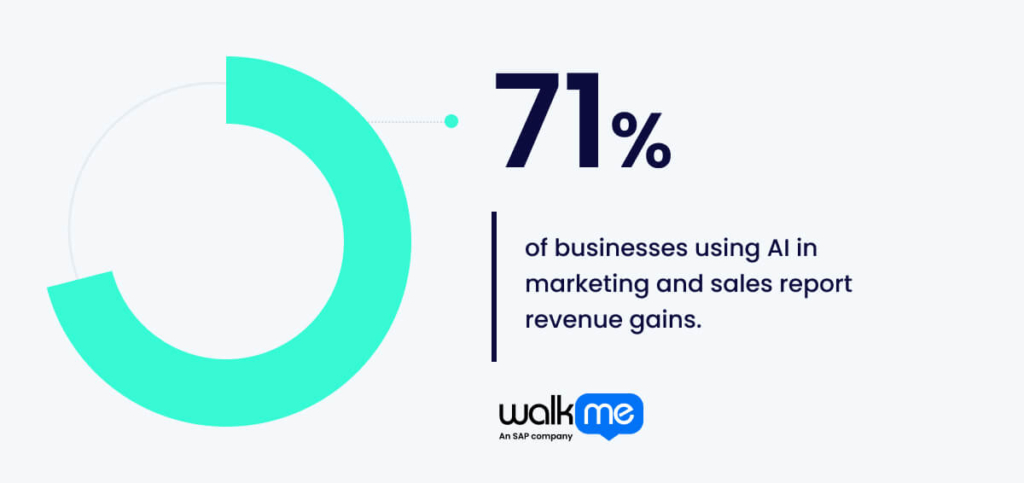The value of AI statistics is often underutilized, particularly in relation to AI adoption. For those working in enterprises, understanding and interpreting statistics should be an integral part of their daily workflow.
In the US, AI adoption remains uneven. In 2025, the U.S. Chamber of Commerce noted that although more businesses recognize the benefits of AI, many still face barriers that slow widespread adoption.
At the same time, the European Parliament warned that underuse of AI could cost the EU its competitive edge and stall economic growth.
To put these challenges into perspective, we’ve compiled 50 AI adoption statistics that provide CIOs and enterprise leaders with a clear view of where adoption stands today and where it is heading.
What are AI adoption statistics?
For the context of this article, it’s important to break down what AI adoption statistics are.
AI adoption statistics track the implementation, investment, and integration of AI technologies within organizations, highlighting both progress and barriers across various industries.
The AI adoption statistics included in this article can be used to inform data-backed strategies that encompass everything from AI ethics and responsible AI to AI transformation.
Why are AI adoption statistics important?
AI statistics are important because they provide enterprises with a means to measure the success rate of AI initiatives.
As AI becomes more apparent in business environments, it’s important to glean insights from statistics to inform everyday decision-making.
This approach can be applied in less complex areas, such as creating and implementing new digital workflows, or it can inform more technical aspects, like digital strategy.
The key is understanding how to interpret statistics and apply them in areas where they will have the most impact for your business.
AI Market overview

We begin our list with statistics that offer insights into the AI market as a whole.
It’s a great starting point, providing businesses with a way to understand overall trends, spot opportunities, and assess their own adoption efforts in comparison.
The statistics in this category highlight the size, growth, and direction of the AI market, giving leaders context for identifying opportunities and risks.
AI Growth & adoption trends
The next set of statistics focuses on the growth and adoption of AI, showing how quickly businesses are integrating it and where momentum is building.
Leaders should maintain a straightforward view of which industries and use cases are moving fastest, helping spot opportunities, avoid pitfalls, and plan adoption strategies that work. These stats make it easier to see what’s working, where, and how to scale.
AI in business operations
Our third category is AI in business operations. This section shows how companies are using AI to work smarter, faster, and more precisely.
From smoothing the grind of daily operations to surfacing opportunities leaders might otherwise miss, AI is reshaping how work is completed.
These statistics highlight where businesses are seeing impact, offering leaders insight into which tools and workflows deliver results.
AI in marketing, sales, & customer engagement

Marketing, sales, and customer engagement are where AI’s influence is becoming tangible. Data shows which tools drive results, from improving conversion rates to personalizing interactions at scale.
The statistics in this section reveal how organizations are using AI to gain a deeper understanding of their customers, optimize campaigns, and streamline sales processes. They provide practical benchmarks for leaders seeking to measure progress.
AI and workforce impact
AI is shaking up the way we work, pushing roles and skills into new territory. Employees are learning, adapting, and sometimes scrambling, while businesses race to keep up.
These figures show how AI is reshaping the face of work, highlighting shifts in roles, skill demands, and the areas where employees and businesses can seize real advantage.
Current AI applications
These statistics illustrate the current applications of AI across various industries and roles.
They highlight which tools are gaining traction, how employees are interacting with AI, and where organizations are seeing measurable impact. The numbers reveal adoption patterns, emerging trends, and the practical ways AI is shaping work.
AI challenges & regulations
AI is moving rapidly, but growth comes with its own set of challenges. This means that companies are grappling with compliance, ethical dilemmas, and practical hurdles, from data privacy to oversight.
Understanding how businesses tackle these challenges provides insight into the rules, governance, and responsibility that shape the next wave of adoption.
The future of AI
The future of AI is poised to reshape business and work, driving productivity, innovation, and strategy in unprecedented ways. These statistics highlight where change will have the greatest consequence, including new business models and human-AI collaboration.
Understanding them reveals how companies can adapt, seize opportunities, and stay ahead.
Turning AI adoption statistics into actionable insights
These curated AI adoption statistics provide a lens for understanding AI’s impact across the various housing categories mentioned above.
Applied thoughtfully, they can guide daily business decisions, be measured against strategy, and highlight opportunities for improvement.
Taking a proactive approach to digesting these insights provides a framework for planning AI adoption, assessing ROI, and speeding up oftentimes slow business outcomes.
AI transformations fail because businesses underestimate the challenges of scaling beyond small pilots, running into AI security concerns, talent shortages, and poor change management.
Incorporating these statistics into your decision-making gives businesses an evidence-based understanding of AI’s potential and a reliable foundation for shaping the future of the AI horizon.
FAQs
Enterprises use AI the most because they have more financial resources, data, and expertise. Medium-sized businesses initially test it in specific areas. Smaller companies use AI only for basic tasks or simple automation, slowly learning how to apply it more widely as they grow.
Many companies struggle with AI because they don’t have enough skilled workers, clear plans, or good data. Scaling up from small experiments is challenging, and poor management or a lack of investment can hinder progress. These issues keep businesses from using AI to its full potential.
Using AI increases risks to personal data and company security. Businesses must monitor how data is used, prevent mistakes and bias, and adhere to regulations. They are improving safety, closely monitoring AI, and implementing robust cybersecurity measures to ensure AI can be used safely and fairly.

